Turntable Mats: the great comparison
Eight different types compared: which will be the best?
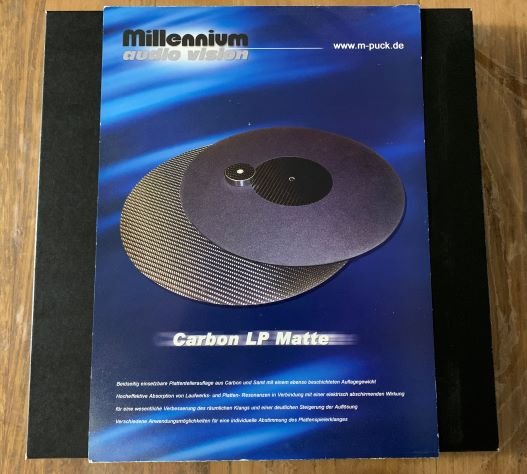
[ Home TNT-Audio | Staff & Contacts | HiFi Playground | Listening tests | DIY & Tweakings | Music & Books]

Products: different turntable mats
Prices: Millennium Audio 170€, cork 15 - 20€, Audiosilente Grafite HD 290€
Reviewer: Piero Canova - TNT
Italy
Reviewed: November, 2023
This summer, during the holidays, I came across a turntable mat that I didn't know and readily purchased it. When it arrived, I started looking at how many types of mats I already had in the house, and I saw I had several, all traceable to 8 main families. I started searching the net to see if there were mats made of other materials and, aside from those made of metal (copper, brass), if I had all the materials I thought to compare to determine which, in my opinion, offer the best performance. As you can understand, to make a complete judgement, I had to test them on different turntables to see if the differences were constant and not attributable to a particular synergy between the mat and the turntable. In the end, summarizing all these tests required two articles, of which this is the first.
The need for a mat to be interposed between the metal platter and the disc was born with the turntable itself. In my 1962 AMI juke box there is a rubber disc above the metal platter that was supposed to prevent vinyl from creeping onto the metal and slipping in play. Later it was also thought that rubber could insulate the record from the vibrations of the turntable, and so in the '60s and '70s the mats were of various shapes but all made by heavy and rubbery compounds. Thorens, Lenco, Dual, Technics, Sony, etc. all had one of these, just slightly different in shape.
Meanwhile mats begun to appear in other materials such as leather, cork or felt with common claimed features: anti-vibration, non-slip, antistatic. At the beginning of the '90s the availability of different materials for the platters to think that the best way was to build the platters in materials that were as similar as possible to the vinyl record, and then came the explosion of polycarbonate platters and those of other plastics. The mats also followed this trend by introducing materials such as Graphite HD, carbon fiber, rigid polymeric compounds and special cellulose mixtures.
Each mat was tested on 5 different turntables: Technics SP10 MK II, Denon DP 6000, Sony TTS 4000, Lenco L75 and Scheu Premier MK III. In some cases it was necessary to couple two different mat; otherwise they could not have worked.
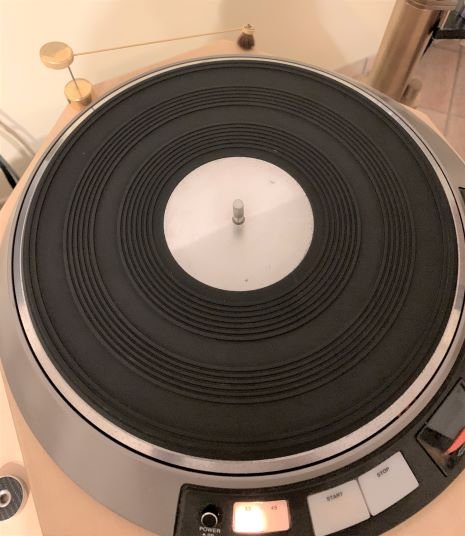
In the picture you can see the mat that Denon supplies as standard on DP turntables. It's a black rubber disc with a large hole in the center where there's a metal pad on the vinyl label. Its presence was one of the problems of the test because it varies the thickness of the platter, requiring me to modify some mats by digging it in. The sound is, in my opinion, dark, muted, without life and rhythm. Neither the width of the soundstage or the placement of instruments is anything special. Conclusion: putting it on a modern turntable like the Scheu hurts the sound. On older machines you'll have to live with it but it is inferior to other types.
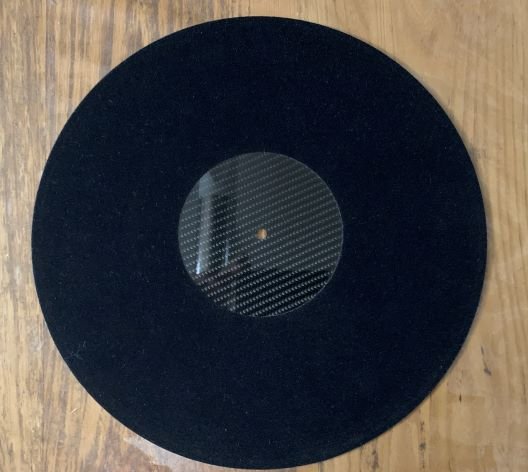
On TNT you can find the review of this mat published in September 2010. Since then, Millennium Audio has raised the prices by a lot (170€ today) but you can find clones for around 100€. Compared to the rubber mat, the improvement is evident in every way. With the felt side up, the tonal balance, while possibly tending toward the bright side, is better than with the carbon fiber side up, but on the Scheu the mat when so positioned tends to slip; with the carbon fiber side up, the mat is more secure but the tonal balance is definitely too bright. Conclusion: it is a significant improvement over the rubber mats, but I would not choose it for acrylic or similar materials.
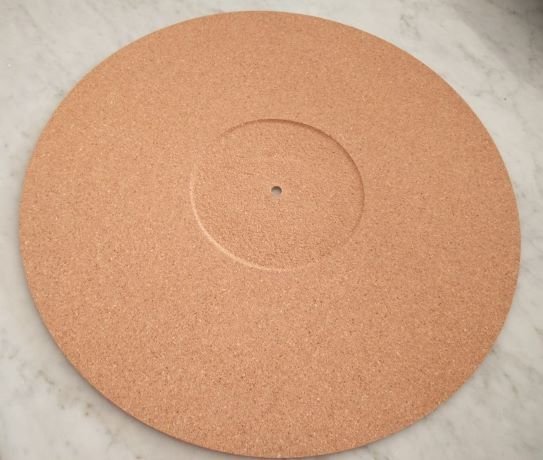
We reviewed the MayRecords cork mat in 2021. On average, the sound is good, but it loses a bit of brilliance and speed. Performance is better than that of the rubber mat but not better than some others in the test; the cork mat does particularly poorly when combined with an acrylic platter. A little DIY project to substitute two or three cork mats for a rubber mat yields remarkable improvement compared to rubber alone and, for example, cork + carbon fiber. The results of this combination are among the best in the tests. The cost is very reasonable, so I recommend this approach.
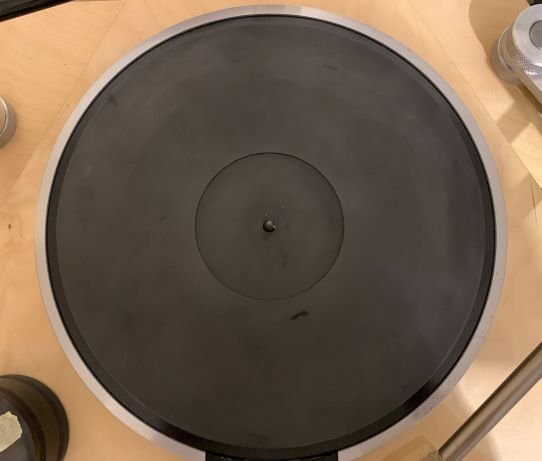
To define it as a mat understates its size, considering it is an HD graphite disc that weights 700g and is at least 6mm thick, enough that one can dig a recess in the center corresponding to the relief of the platter. It is not an universal mat, because many direct drive turntables struggle to keep the high mass speed (in my experience only Sony turntables generally do not suffer from this problem). It sounds like graphite and then dries the bass and shifts the tonal balance to the mid treble. Definition, soundstage and detail are present in industrial quantities. It works very well with the Lenco and, just as well with the Sony TTS 4000. With the Scheu it depends; if your system is already open and detailed, it could become fatiguing. If it's a little sleepy and gloomy, this mat could be the improvement you're looking for.
In the next article: leather, felt, paper and plastic...
DISCLAIMER . TNT-Audio is a 100% independent magazine that neither accepts advertising from companies nor requires readers to register or pay for subscriptions. If you wish, you can support our independent reviews via a PayPal donation . After publication of reviews, the authors do not retain samples other than on long-term loan for further evaluation or comparison with later-received gear. Hence, all contents are written free of any “editorial” or “advertising” influence, and all reviews in this publication, positive or negative, reflect the independent opinions of their respective authors . TNT-Audio will publish all manufacturer responses, subject to the reviewer's right to reply in turn.
[ Home TNT-Audio | Staff & Contacts | HiFi Playground | Listening tests | DIY & Tweakings | Music & Books]